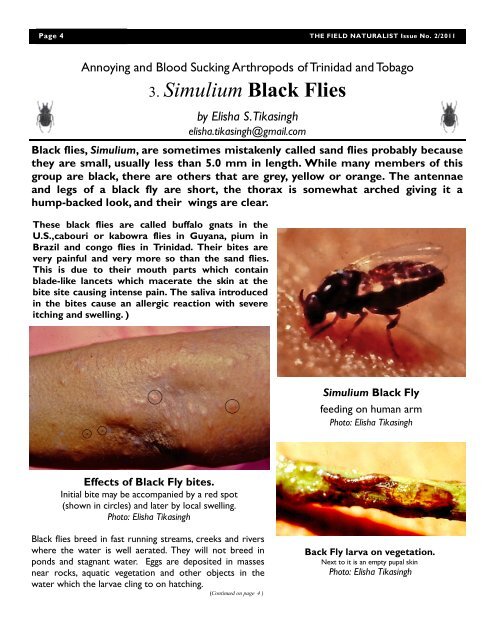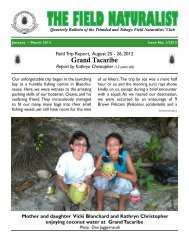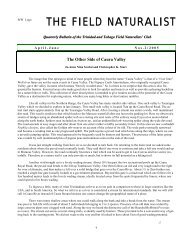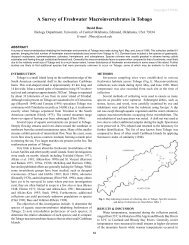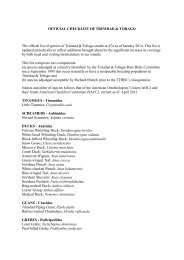Moruga Bouffe - The Trinidad and Tobago Field Naturalists' Club
Moruga Bouffe - The Trinidad and Tobago Field Naturalists' Club
Moruga Bouffe - The Trinidad and Tobago Field Naturalists' Club
You also want an ePaper? Increase the reach of your titles
YUMPU automatically turns print PDFs into web optimized ePapers that Google loves.
Page 4 THE FIELD NATURALIST Issue No. 2/2011Annoying <strong>and</strong> Blood Sucking Arthropods of <strong>Trinidad</strong> <strong>and</strong> <strong>Tobago</strong>3. Simulium Black Fliesby Elisha S. Tikasinghelisha.tikasingh@gmail.comBlack flies, Simulium, are sometimes mistakenly called s<strong>and</strong> flies probably becausethey are small, usually less than 5.0 mm in length. While many members of thisgroup are black, there are others that are grey, yellow or orange. <strong>The</strong> antennae<strong>and</strong> legs of a black fly are short, the thorax is somewhat arched giving it ahump-backed look, <strong>and</strong> their wings are clear.<strong>The</strong>se black flies are called buffalo gnats in theU.S.,cabouri or kabowra flies in Guyana, pium inBrazil <strong>and</strong> congo flies in <strong>Trinidad</strong>. <strong>The</strong>ir bites arevery painful <strong>and</strong> very more so than the s<strong>and</strong> flies.This is due to their mouth parts which containblade-like lancets which macerate the skin at thebite site causing intense pain. <strong>The</strong> saliva introducedin the bites cause an allergic reaction with severeitching <strong>and</strong> swelling. )Simulium Black Flyfeeding on human armPhoto: Elisha TikasinghEffects of Black Fly bites.Initial bite may be accompanied by a red spot(shown in circles) <strong>and</strong> later by local swelling.Photo: Elisha TikasinghBlack flies breed in fast running streams, creeks <strong>and</strong> riverswhere the water is well aerated. <strong>The</strong>y will not breed inponds <strong>and</strong> stagnant water. Eggs are deposited in massesnear rocks, aquatic vegetation <strong>and</strong> other objects in thewater which the larvae cling to on hatching.(Continued on page 4 )Back Fly larva on vegetation.Next to it is an empty pupal skinPhoto: Elisha Tikasingh


